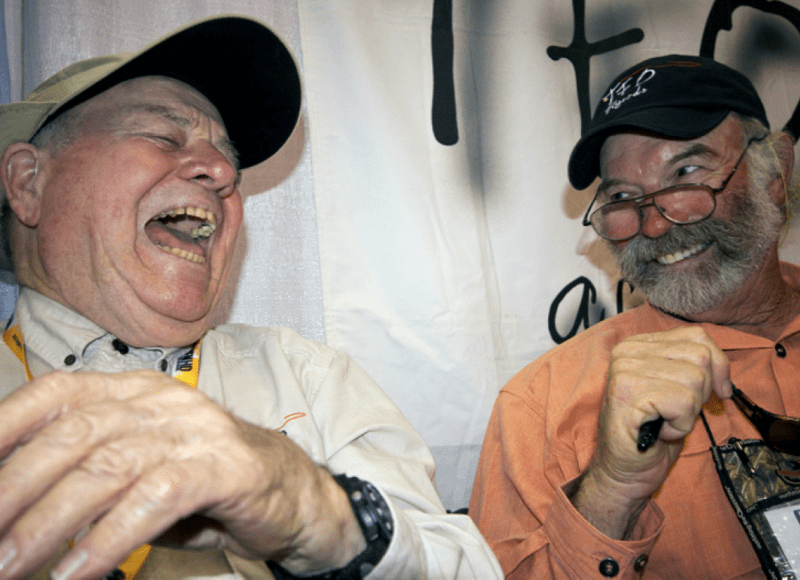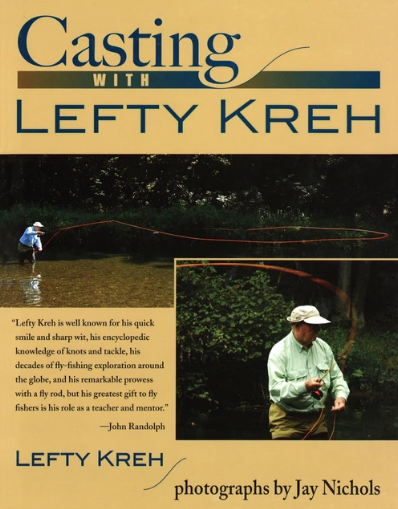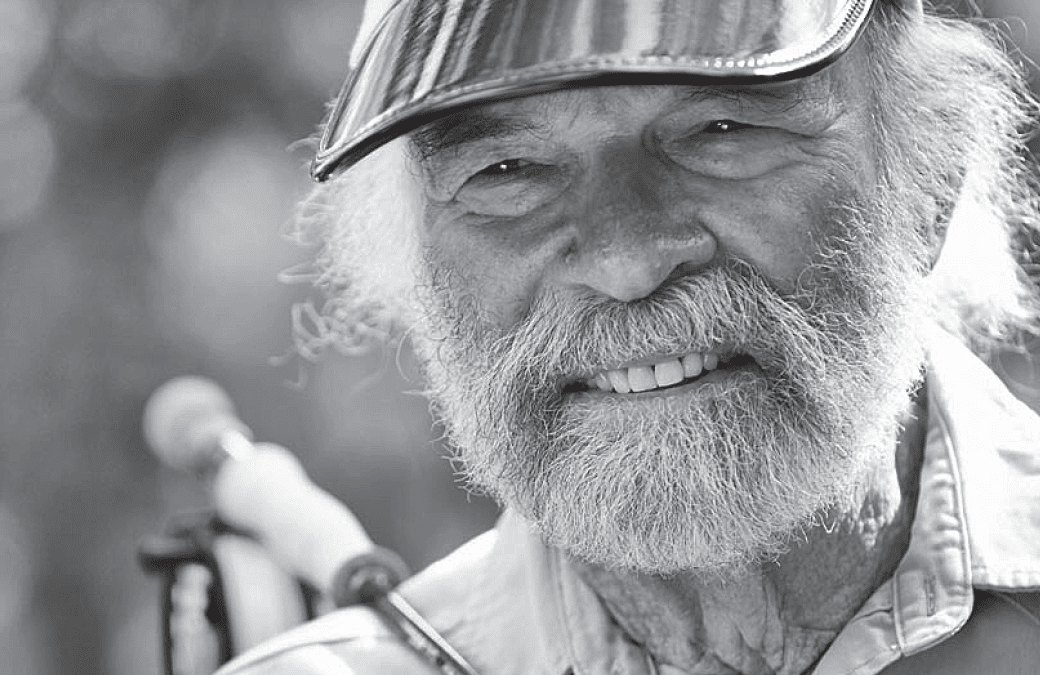There’s more to the story. The flip side of Flip. He stays busy– too busy to fish one might think, but flingin’ a fly is always on the schedule.
When most of us landlubbers think of Flip Pallot, we picture a smiling, bearded gentleman casting a fly for bonefish or reds somewhere in the Bahamas. Walker’s Cay Chronicles and that sort of thing. But there’s more to the story. The flip side of Flip. He stays busy. Too busy to fish one might think, though flingin’ a fly is always on the schedule. Whether he’s helping with relief efforts in the Bahamas after Hurricane Dorian, hosting groups on fishing excursions, narrating an SEC football TV special or creating his own brand of rum, Flip will find time to wet a line.
LC: You’ve spent most of your life in Florida. Is that right?

Flip with a beautiful bonefish, back when Florida was pristine and unspoiled.
FLIP: I was born and grew up in south Florida. Homestead. Lived there until 1992 when we were visited by Hurricane Andrew, which turned out to be a terribly strong hurricane. We lost our home and boats and trucks, and a lifetime of photography in the Everglades. We virtually lost everything. Our home blew down in a matter of about 45 minutes with us in it. Shortly after the hurricane we moved up to central Florida where we’ve been since then. We built a home in the woods and we’ve lived there for almost 30 years now. So, we’re pretty well ensconced right there, and this is probably where the finish line will be, I guess.
LC: You’ve been very involved in relief efforts in the Bahamas after Hurricane Dorian. How’s that going?
FLIP: It’s been pretty nonstop since things calmed down enough to get over there. Land boats, land planes and pretty much non-stop evacuating people, moving them to Nassau and the states. It’s so incredibly bad there, it’s unimaginable. I have so many friends and business associates there for so many years, it’s just something I can’t ignore.
LC: How do you normally spend your summers?
FLIP: I spend a good portion in Wyoming and Idaho. I usually go out there in June or very early part of July and stay there until after the first week of archery season for elk and mule deer. So, I hunt there that first week of September and then drive home to Florida. My wife will fly out mid-August and we fish together. Then she flies back before hunting season starts. I drive back after that week of hunting. But this year, it was all interrupted by the hurricane. We were out west fishing. I was supposed to hunt elk. Then, when we began to see how nasty the storm was becoming, we figured we’d better get home, board up, take care of our animals. So we wound up in a race trying to beat the storm by a day or two so we could put up our shutters.
LC: Are you still hosting groups?
FLIP: Usually I take a couple of groups, up to a dozen people each, to the Bahamas where we stay at Abaco, The Black Fly and Deepwater Cay Lodge. I take one group to Texas for redfish, sometimes groups to Bermuda or Costa Rica…it just depends on the year. I try to mix it up. It’s hard to find group destinations though, at least for the guys who travel with me. They want to have their own rooms. It has to be a destination where I can strike a deal with the lodge. It has to be really good fishing, accommodations and food, so it can’t just be anywhere.
LC: I understand that you’re very involved in conservation down there, like Mosquito Bay.
FLIP: I try to be as active in conservation as I possibly can. Particularly in regard to Florida’s water issues. Mosquito Bay’s a beautiful area with monstrous water problems. It’s very complicated, very difficult to deal with. We hope there’s a way, but we’re not at all sure. It’s at critical mass at this point. If something’s not done in the short term, we’ll probably lose a lot of Florida’s really pristine water resources, including the Everglades. It’s a grassroots battle that we’ve fought for a long time without any help from the state government. But things changed this past year when a governor who is concerned was elected. It remains to be seen, but he’s made some wonderful promises and seems to be a man of his word.

Lefty Kreh and Flip enjoy a laugh together. They were close friends for 50 years.
LC: You’ve had the opportunity to fish with some colorful characters. Lefty Krey, for instance.
FLIP: (Laughs) Well, I fished with Lefty for over fifty years. We started out as neighbors and very quickly became close friends. Lefty was probably one of the greatest influences on my life. Not only in angling, but most of the life lessons I ever learned, I learned from Lefty. There has been a huge void since his departure three years ago. But I was lucky. I grew up in south Florida and it was arguably the crucible of saltwater light tackle angling. And certainly, saltwater fly fishing. So many of the people who pioneered it were in place and I was in my formative years. The fishing community was small then, so I knew virtually everyone who was at the pioneering level of these activities. Men like Lefty and Stu Apte and Chico Fernandez—those were the people I grew up with and fished with for a whole lifetime. What’s become of Florida is tragic. Nobody took care of anything along the way. Now, nobody can do the things in Florida that I was able to do, or the people I grew up with were able to do.
LC: I imagine you have plenty of stories about fishing with some interesting folks.
FLIP: At one point there came the opportunity for me to take Lefty fishing. I knew that he was a great fly fisher, so I took him to the Everglades for redfish at an old fishing village called Flamingo. We launched my little aluminum boat there and ran about 20 minutes to a bight in the mainland that was very, very shallow and where I knew there were redfish. I poled Lefty back up in there. He brought a fly rod with him but no other tackle. He didn’t even bring flies because he hadn’t been redfishing. So, I had flies for him to use. He also brought a plastic box with his camera equipment in it. It was a big bulky box, so it didn’t fit well in the boat and it was in the way and aggravating, but it was Lefty’s, so it was okay. As I poled into the bight, I noticed twenty or thirty flamingos wading in the shallow water, maybe six inches deep. They were flapping their wings, but not flying. Just walking and flapping. They were actually scaring up shrimp and catching them in their beaks. And all around their feet were tailing redfish just following them, getting the shrimp that the flamingos missed. I got so excited when I saw this and I pointed it out to Lefty. So, I started poling furiously to keep up with them so we could get in some casts among the flamingos to catch some redfish. As we got almost into casting range, Lefty put his rod down, opened his camera box and laid down on the bow of the boat. He had a gunstock attached to his camera, which had a long 400-milimeter lens. He took one of the boat cushions and laid it on the bow, then rested the lens on that and directed me to pole toward the flamingos so he could get pictures of the redfish tailing at their feet. He had absolutely no interest in catching those fish. He only wanted to photograph them. It was shocking to me that somebody would rather take pictures of these things than fish for them. What it was, was really a wonderful life lesson about priorities. And he taught me that without saying a word. It was a wonderful photograph that I had with me until Hurricane Andrew, and we lost it in that storm.
Read Part II of Chesney’s interview with Pallot.
 Take a private lesson with the best teacher in the business. With over 40 casts covered in step-by-step detail in over 1,200 full-color photographs. Casting with Lefty Kreh is the perfect reference for the fly fisher who wants to improve his skills. Casting should be nearly effortless. Understand the physics and the dynamics of casting and how to adapt to various fishing conditions and your casting will greatly improve. That has been Lefty’s philosophy since he began teaching fly casting over fifty years ago.
Take a private lesson with the best teacher in the business. With over 40 casts covered in step-by-step detail in over 1,200 full-color photographs. Casting with Lefty Kreh is the perfect reference for the fly fisher who wants to improve his skills. Casting should be nearly effortless. Understand the physics and the dynamics of casting and how to adapt to various fishing conditions and your casting will greatly improve. That has been Lefty’s philosophy since he began teaching fly casting over fifty years ago.
By fishing all over the United States and many parts of the world, Lefty learned the techniques experts use on different waters, in every situation imaginable. He shares that knowledge here through easy-to-understand instructions and full-color photographs the show exactly how to make every important cast. Buy Now

